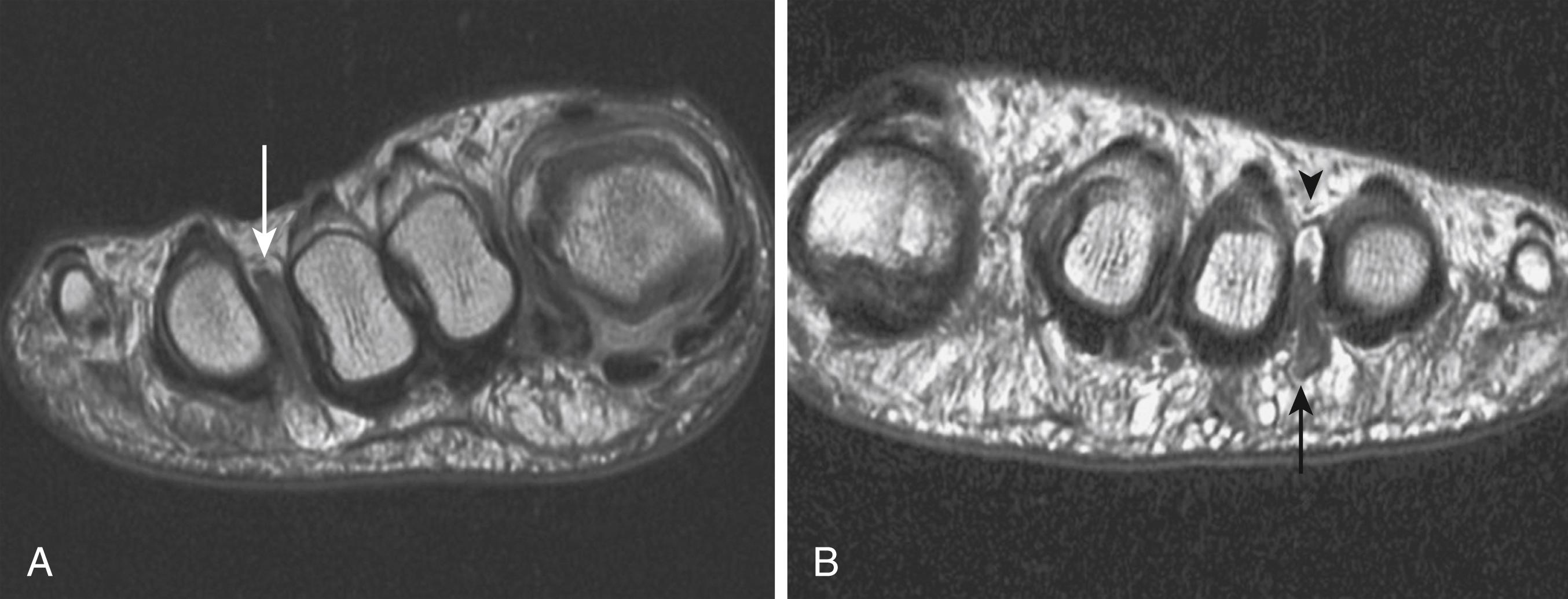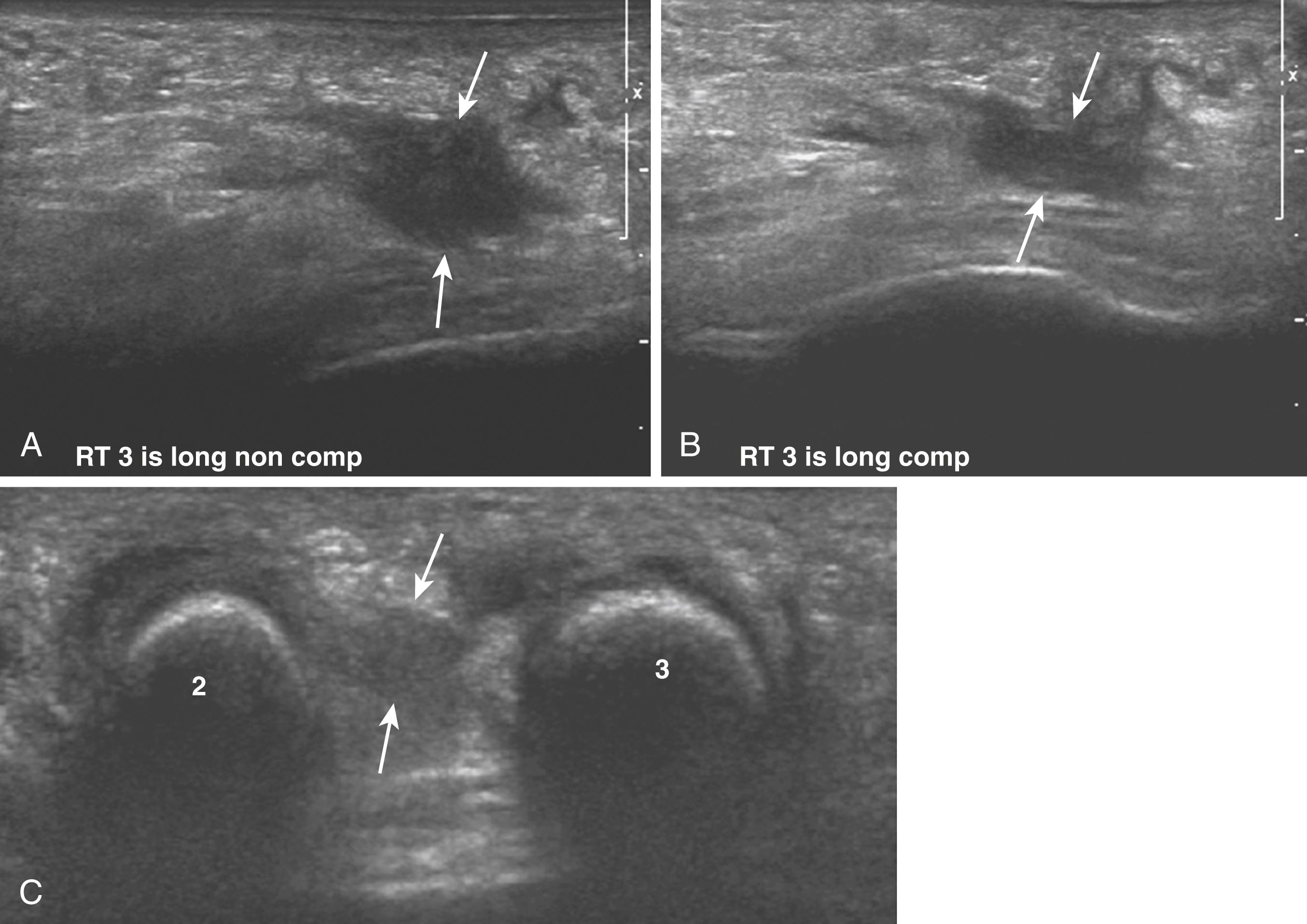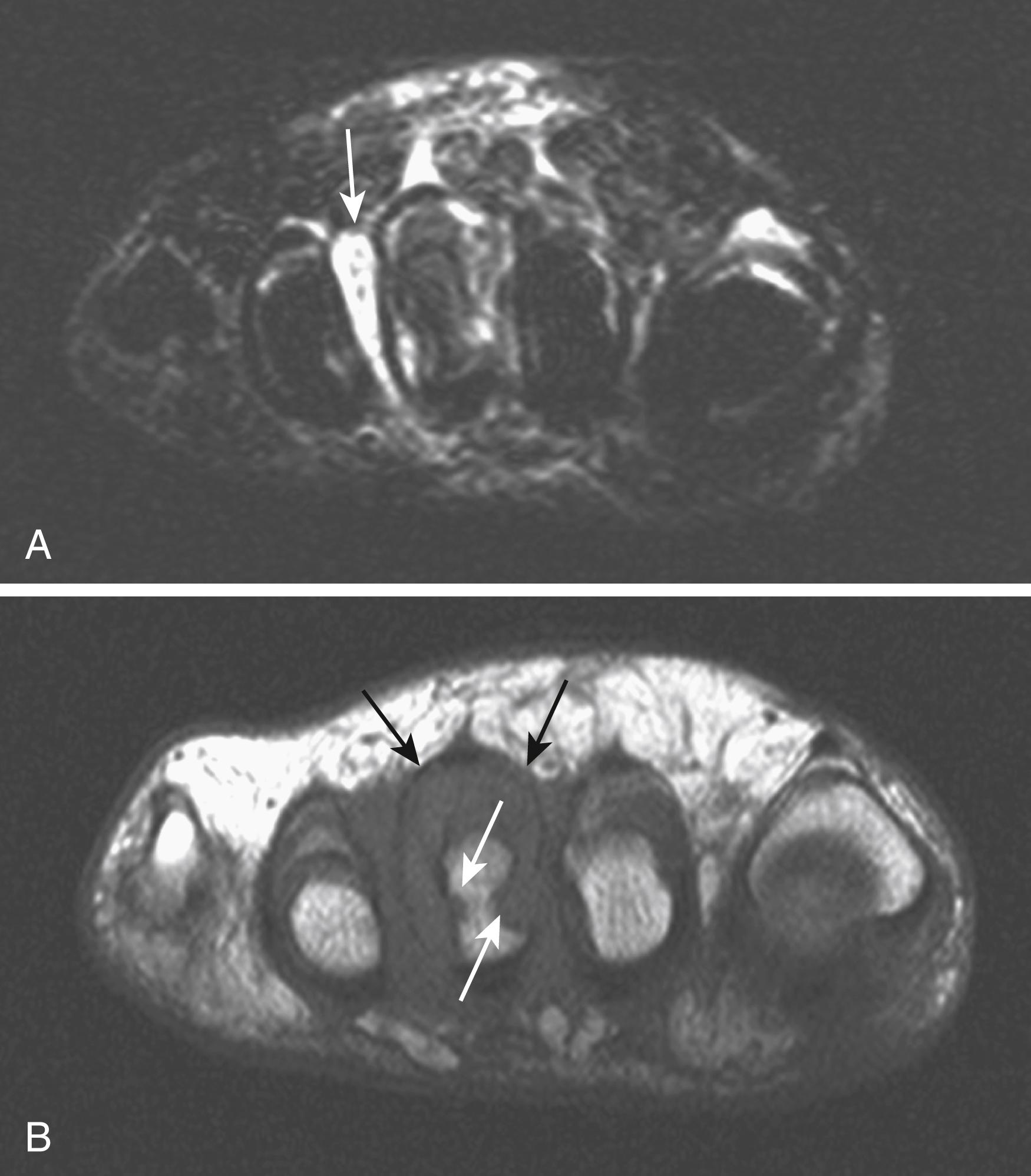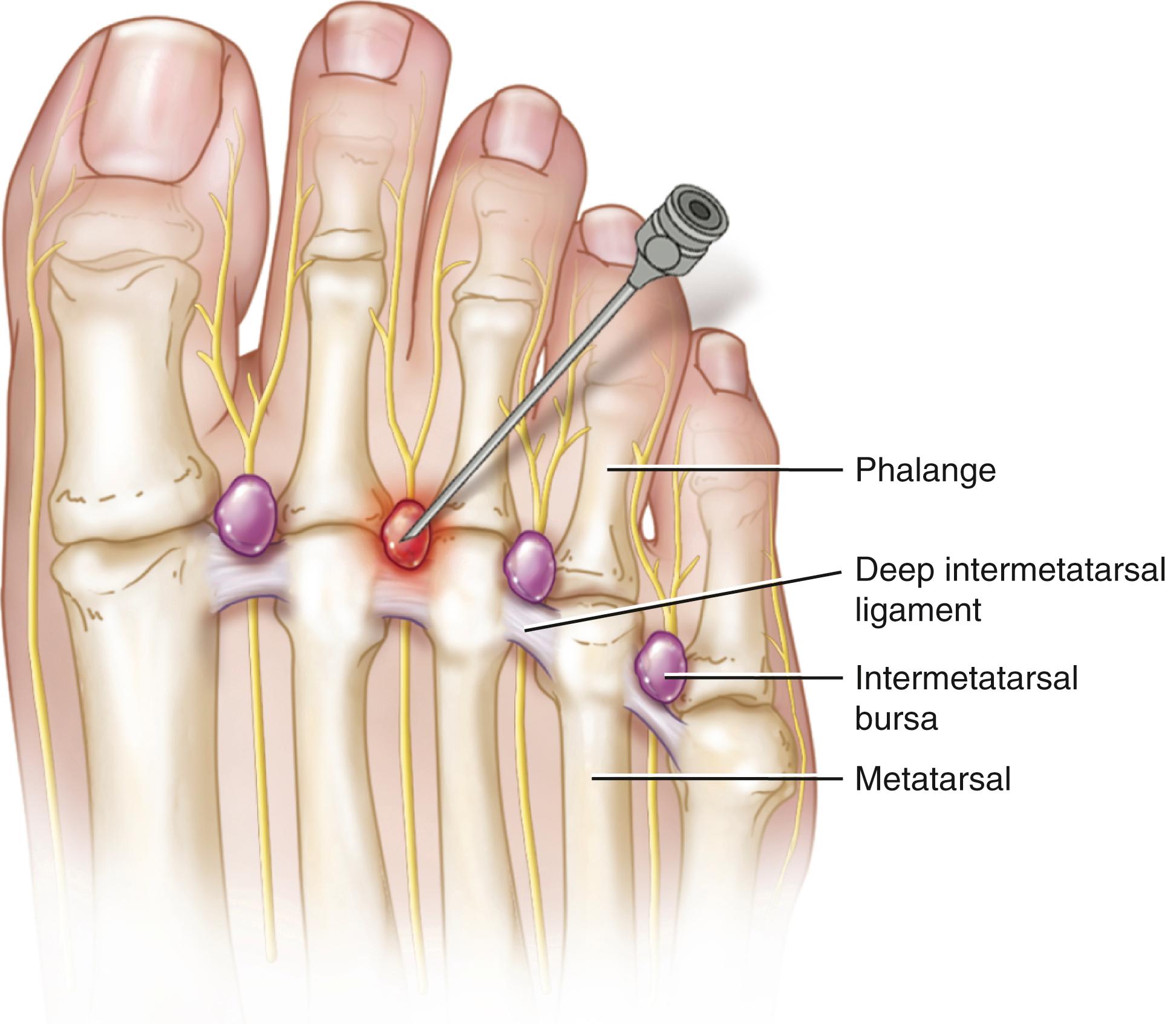Physical Address
304 North Cardinal St.
Dorchester Center, MA 02124
Bursae are formed from synovial sacs that allow easy sliding of muscles and tendons across one another at areas of repeated movement. These synovial sacs are lined with a synovial membrane invested with a network of blood vessels that secrete synovial fluid. Inflammation of the bursa results in an increase in the production of synovial fluid with swelling of the bursal sac. With overuse or misuse, these bursae may become inflamed, enlarged, and on rare occasions infected. Although there is significant intrapatient variability as to the number, size, and location of bursae, anatomists have identified a number of clinically relevant bursae, including the intermetatarsal bursae. The intermetatarsal bursa lies between the metatarsal phalangeal joints in a position that is just dorsal to the deep transverse intermetatarsal ligament. The bursae extend approximately 1 cm beyond the distal border of the ligament in the web spaces between the second and third and the third and fourth digits.
This bursa may exist as a single bursal sac or in some patients as a multisegmented series of sacs that may be loculated. Most investigators think that intermetatarsal bursitis is a result of repeated microtrauma to the intermetatarsal space and that intermetatarsal bursitis, intermetatarsal fibrosis, and the development of Morton neuroma all share similar pathogenesis and may all coexist in the same patient ( Figs. 198.1 and 198.2 ).


Patients with intermetatarsal bursitis experience pain and tenderness over the affected intermetatarsal spaces, with the pain made worse by wearing high heels or shoes that are too narrow. Obesity may also predispose a patient to this condition. The pain may radiate distally into the toes, especially if the adjacent interdigital nerve is involved. Often the patient is unable to stand on tiptoes or walk up stairs. Activity makes the pain worse. The pain is constant, is characterized as sharp, and may interfere with sleep. Coexistent neuritis, neuropathy, Morton neuroma, stress fractures, metatarsalgia, and synovitis may confuse the clinical picture. As the bursitis worsens, the affected intermetatarsal bursae tend to expand, surrounding the adjacent interdigital nerves and making the patient’s clinical presentation indistinguishable from the pain of Morton neuroma. If the inflammation of the intermetatarsal bursae becomes chronic, calcification of the bursae and fibrosis of the surrounding interdigital space may occur.
On physical examination, pain can be reproduced by squeezing the affected web space between the index finger and thumb. If the interdigital nerve is involved or if a Morton neuroma has developed, a positive Mulder sign can be elicited by firmly squeezing the 2 metatarsal heads together with 1 hand while placing firm pressure on the interdigital space with the other hand. The patient with intermetatarsal bursitis often exhibits an antalgic gait in an effort to reduce weight bearing during walking.
Plain radiographs are indicated for all patients with intermetatarsal bursitis to rule out fractures and identify sesamoid bones that may have become inflamed. On the basis of the patient’s clinical presentation, additional testing may be indicated, including complete blood cell count, sedimentation rate, and antinuclear antibody testing. Magnetic resonance imaging and ultrasound imaging of the metatarsal bones are indicated if Morton neuroma, joint instability, occult mass, or tumor is suggested ( Figs. 198.3 and 198.4 ). Radionuclide bone scanning may be useful in identifying stress fractures of the metatarsal bones or sesamoid bones that may be missed on plain radiographs of the foot.


In a manner analogous to the digital nerves of the hand, the digital nerves of the foot travel through the intermetatarsal space beneath the deep transverse intermetatarsal ligament to provide innervation to each toe ( Fig. 198.5 ). The plantar digital nerves that are derived from the posterior tibial nerve provide sensory innervation to the major portion of the plantar surface. The dorsal aspect of the foot is innervated by terminal branches of the deep and superficial peroneal nerves. There may be considerable overlap in the sensory innervation of these nerves.

The intermetatarsal bursa lies between the metatarsal phalangeal joints just dorsal to the interdigital nerves (see Fig. 198.5 ). The bursae extend approximately 1 cm beyond the distal border of the ligament in the web spaces between the second and third and third and fourth digits.
Become a Clinical Tree membership for Full access and enjoy Unlimited articles
If you are a member. Log in here